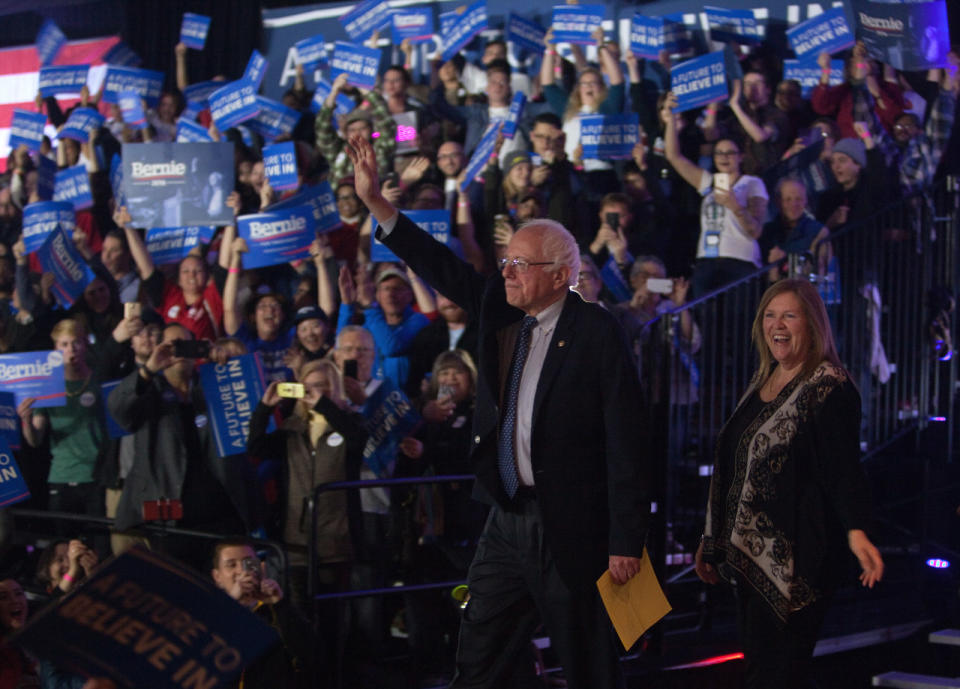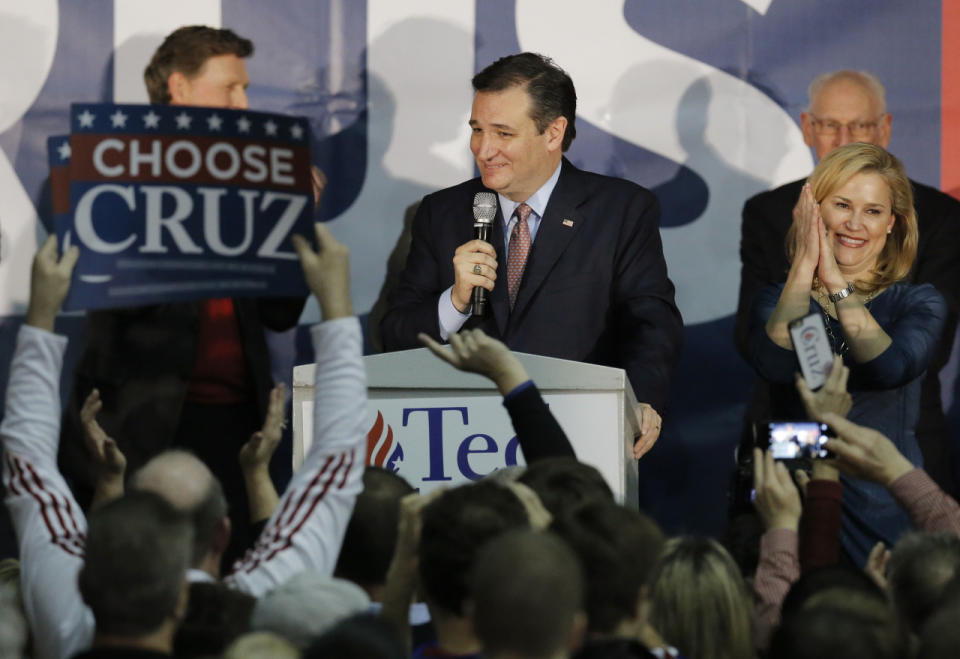With the help of Microsoft, Iowa’s caucus system inches into the 21st century
DES MOINES, Iowa – As John McCormally’s precinct settled on its final votes Monday night, the caucus chair did something wholly unprecedented in the state’s political history: He stared into his smartphone.
“Hey,” he said to the crowd of approximately 320 people who’d filtered in from the Democratic precinct of Sherman Hill in Des Moines. “Can I get a representative from each of the campaigns here — just to watch me do this?”
Leaders from the Hillary Clinton, Bernie Sanders and Martin O’Malley camps pushed through the thick crowd inside the local union house to watch, and McCormally opened up a new app on his Samsung phone — an app that Microsoft had made specially for this moment. After typing in his precinct code to verify his location, he received a text with a PIN in it. “5756, remember 5756,” he told me, delegating responsibility like a true caucus chair.
SLIDESHOW – Iowa caucuses – Winners and waiters >>>
Once he was in the program, he entered the total number of people he’d counted at the beginning of the night, along with how they’d ultimately divided themselves at its end: 188 for Bernie Sanders, 51 for Martin O’Malley, 83 for Hillary Clinton and zero “other” and “uncommitted” voters, despite one 6-year-old’s earlier declaration that she had yet to choose a candidate. McCormally tapped a big green button, and the app crunched the numbers in seconds, translating the number of caucus-goers into a number of delegates: three for Sanders, two for Clinton and one for O’Malley.

Bernie Sanders greets supporters in Des Moines after a close race in the Iowa caucuses Monday. (Photo: Khue Bui for Yahoo News)
As soon as he touched the submit button, the data was stored in Microsoft’s Azure Cloud data storage system and sent to the Iowa Democratic Party headquarters. Hundreds of other precinct leaders across the state, from both parties, were doing the same, allowing the incoming caucusing results to be displayed by news organizations even as some of the gatherings were still going on.
Microsoft’s effort to digitize the Iowa Democratic and Republican caucus number-crunching systems is one of the first major steps to bringing the caucuses into the 21st century. Unlike past manual and phone-based systems used to tabulate Iowa caucus numbers — systems with a history of inaccuracy — this simple app allows for caucus chairs to check their math, correct potential typing errors and submit their results as quickly as possible.
Theoretically, it’s a welcome step forward in a nation where voting has been plagued by hanging chads and the need for recounts — and an especially welcome one Iowa, where caucus victors can see momentum benefits of winning dulled when results drag out.
But as last night’s results filtered into Microsoft’s dedicated Republican and Democratic websites, one thing became clear: A tallying system, no matter how well-designed, is only as efficient as the humans who use it. Because the Republican caucus rules only require attendees to take a straw poll, open the floor to short speeches and then cast an anonymous paper ballot vote, it’s no surprise that a victor, Ted Cruz, was able to be named before 10 p.m. But for the Democrats — whose caucus process is more complicated and whose caucus-goers were nearly evenly split — no digital system could have prevented the race between Clinton and Sanders from painfully inching forward into the middle of Tuesday.
That said, on the data side, things worked as planned. Once the main hive received the data, Microsoft’s built-in algorithms began to evaluate it for human errors, like missing or extra digits on otherwise reasonable entries — the same kind of errors that caused Iowa Republicans to declare Mitt Romney the caucus winner in 2012, when it was actually Rick Santorum.
“Let’s say some precinct out in the middle of Iowa that has 150 registered voters reports that they had 15,000 people show up,” Stan Freck, Microsoft’s senior director for campaigns and elections told Yahoo News. “Who knows, maybe that’s true? But they’re going to want to make that phone call” to double check.
After the data was looked over by staff at each party’s headquarters, it was then fed into a newly established (and occasionally glitchy) website, where press and political junkies were able to see real-time estimates of the voting results updated by precinct. To a 20-something like myself, this digital system was as intuitive as hailing an Uber or sending a buck on Venmo. Which is why I was astonished when, earlier in the night, McCormally admitted he’d “be surprised if more than 50 percent of the precinct leaders use it.”

Ted Cruz speaks in Des Moines after his win Monday, with his wife, Heidi Cruz, by his side. (Photo: Jim Young/Reuters)
Freck never expected every precinct leader would use the app, but when building it he and his team were laser-focused on understanding how people — especially older Iowans who aren’t as familiar with smartphone technology — would interact with their screen. That meant not only making the text and buttons as easy to read as possible but also working with the parties to hold as many training sessions as possible. Prior to the caucuses, each party held numerous training sessions, where they allowed caucus chairs to do a dry run through their app and act out an imaginary caucus.
“With any technology project, the complications usually come from the people, not the machine,” Freck said. “The reason we have the dry-run demo now is partly so we can show the process itself, but partly so people can try it without feeling that they’re going to break it.”
To Freck, if he’s able to help make the process just a little bit smoother for a few people, he’s done his job.
“We see [the election process] as an important part of our country’s operation,” he said. “It’s critical to our democracy.”
(Cover tile photo:Jim Young/Reuters)

